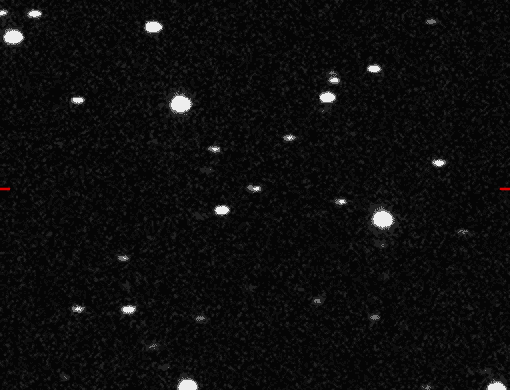Credit & Copyright: S. Sposetti & R. Behrend
(Geneva Obs.)
Explanation:
Last week, a small asteroid approached unusually close to the Earth.
Asteroid 2004 FH posed no danger, but became bright enough to
see with binoculars.
Passing only 7 Earth radii away, this
asteroid pass was the
closest yet that was previously predicted,
although it was
discovered
only two days before.
Pictured above, the 30-meter sized
2004 FH was imaged from
Switzerland crossing the sky on March 18, near its closest approach.
The asteroid, centered in the above time-lapse movie covering
about 30 minutes,
changes in brightness as it tumbles by.
An asteroid this size
passes this close
to Earth about every two years.
Where 2004 FH to have struck the Earth, it would have
likely burned up in the atmosphere.
Large impact features on the
Earth are testaments, however, to
larger asteroids and
comets that actually impacted the
Earth in the distant past.
Astronomers continue to discover, track, and study
potentially hazardous asteroids with a goal of making
planet Earth a safer place.
1999 2000 2001 2002 2003 2004 2005 2006 2007 2008 2009 2010 2011 2012 2013 2014 2015 2016 2017 2018 2019 2020 2021 2022 2023 2024 2025 |
Yanvar' Fevral' Mart Aprel' Mai Iyun' Iyul' Avgust Sentyabr' Oktyabr' Noyabr' Dekabr' |
NASA Web Site Statements, Warnings, and Disclaimers
NASA Official: Jay Norris. Specific rights apply.
A service of: LHEA at NASA / GSFC
& Michigan Tech. U.
|
Publikacii s klyuchevymi slovami:
asteroid - Earth - asteroidy - Zemlya
Publikacii so slovami: asteroid - Earth - asteroidy - Zemlya | |
Sm. takzhe:
Vse publikacii na tu zhe temu >> | |
